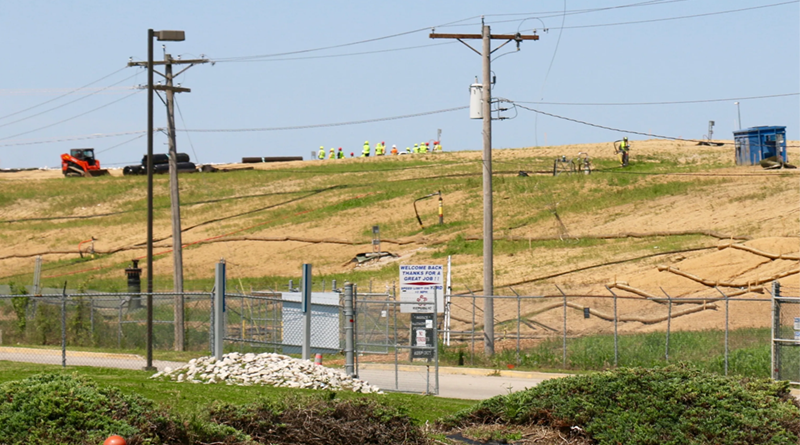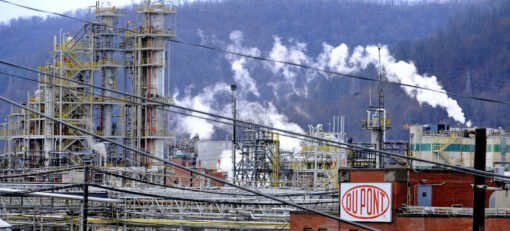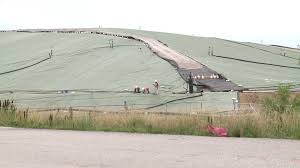This was written by Thalia, one of our student interns. The opinions expressed herein do not reflect those of Civitas other than respect for the value of open dialogue.
West Virginia
Wilbur Tennant and his family had recently sold part of their farmland to a company and had no idea what would end up coming of it. In the 1990s Wilbur began to notice weird deformities in his cows and some of them were even dying. He initially tried getting help from people to figure out what happened to his cows, but when no one listened he decided to dissect the cows himself. What he found wasn’t pleasant and he eventually figured out what was happening to all his cows.
Turns out the company he sold his land to was Dupont Chemical. Dupont Chemical was founded in 1802 under the name E.I. du Pont de Nemours and Company and since then they have been producing many chemicals such as Teflon, commonly found in non-stick pans; Nomex, a flame- resistant metal; and Vespel, a highly used plastic. When they bought half of the farm from Wilbur they began to use it for a landfill to store the toxins being created in the production of their products; they called it “Dry Run landfill.” There they had a pump that was pumping waste into a creek that ran through the farm and flowed right into Wilbur’s land. This of course created some problems. Now it was expected that Wilbur would shut up and keep quiet about this whole ordeal because Dupont was one of the biggest employers in the town. However, when Wilbur learned of what was happening, he immediately confronted the company. Along with this he hired Environmental Lawyer Rob Billet.
After hearing Wilbur’s story, Rob immediately filed a federal suit against Dupont for their alleged involvement in the poisoning of Wilbur’s cows. Since this was an environmental issue, the EPA also stepped in. After doing a study, consisting of three Dupont scientists and three EPA scientists, the conclusion was made that Dupont was not at all responsible for the poisoning of the cows. While this was completely untrue, it was somewhat expected because of the close relationship between Dupont chemicals and the EPA. Rob Billet was not at all satisfied with these results, so he continued to fight on. It ended up being discovered that Dupont knew that there were, previously unidentified, chemicals being pumped into the creek. These chemicals were called PFOS, in particular PFOA. Rob also found out that Dupont knew about the harm of these chemicals for years and never reported it to the EPA. On top of all of this, it also came out that these chemicals had leaked into the Ohio River and had sunk into the West Virginia drinking supply.
After all of this information had come out, there was no way for Dupont to ignore all the bad it had been doing. In the early 2000’s a settlement was reached between Dupont and the Tennant’s and the problem seemed like it was solved. This however was far from the case. Dupont continued to produce this toxic waste. Rob ended up writing a 972 page brief urging the regulation of this production to many US regulatory agencies. In response Dupont requested a gag order, which was denied. To this day though, this issue affects all of us. A study came out showing that nearly all Americans have PFOA, one of the toxic waste chemicals, in their blood; and Teflon, the chemical used for non-stick pans, is still in the houses of many Americans.
St. Louis
After hearing about the Dupont situation in West Virginia, I was reminded of a somewhat familiar situation that takes place really close to home. I am of course speaking of the West Lake landfill. This landfill contains the radioactive waste from the Manhattan project. The landfill waste ended up running into Coldwater Creek, and possibly the Missouri River. Hundreds of children played in this creek, and now communities around the creek are grappling with the devastating effects of this radioactive waste.
Recently Summer interns had the opportunity to speak to Dawn Chapman and Karen Nickel from Just Moms STL, the leaders in the fight to get Coldwater Creek cleaned up. They have been a part of this effort for nearly a decade and while it did come with many sad moments one that they shared with us left me heartbroken. In early 2021 they received news that the EPA needed more testing at sites around the creek. It turned out that a lot more people and a lot more area had been impacted than what was initially expected by the EPA. While they had expected this all along, the pain really came in the confirmation. They have to continue to live in fear of this and now there is no way of telling the real impact of the creek, since the radiation could be anywhere by now.
While this did bring them down a little, Dawn and Karen shared with us some possible plans and hopes for the future of the cleanup. Currently they are still waiting for actual ground to break on the clean-up efforts, but with the new administration they see it coming in the near future. In addition to this they shared some possible plans for how the cleanup can go, including the creation of training programs to employ local community members in the cleaning up efforts. The two are also working with Congresswoman Cori Bush, who recently spoke on the Invest in America Act and its positive effects on the community affected by Coldwater Creek.
A conclusion
From both of these communities we are able to see two very similar stories that are still, very clearly, having effects. To this day Rob the Lawyer writes the EPA a letter urging better environmental regulation and to this day there are still no signs around Coldwater Creek saying that it is contaminated. Like Karen said, “there will never be compensation that everyone is happy with;” however, that does not mean that the EPA should stand around and do nothing while companies continue to produce hazardous waste. This also means that the EPA should work as diligently as possible to correct the wrongs of the past. Looking back at that Wilbert Tennant case, while a settlement was reached, Dupont continues to produce hazardous materials under companies of different names. There should be some sort of provision in place for this not to be allowed. Or looking at the case of Coldwater Creek, there are not even signs in places warning of contamination. The least the EPA could do in this situation is put signs up to prevent kids from playing in the creek.
I hope that the work of Just Moms STL as well as the work of Rob Billet will eventually come to a positive conclusion. In addition to this I hope that their work set the groundwork for more environmental justice




Pingback:Index of 2021 Intern Student Blog Posts - CIVITAS-STL